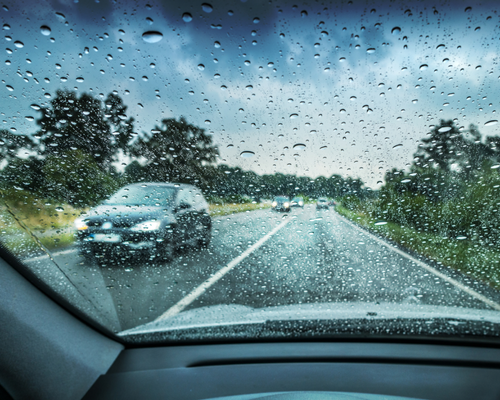Rainy weather brings an increased risk of accidents due to slippery roads and reduced visibility. Whether it’s a light drizzle or a heavy downpour, taking the right precautions can help you avoid dangerous situations and keep yourself and others safe. Here’s what you need to know when driving in wet conditions.
Turn on Your Headlights and Windshield Wipers
No matter how light the rain is, always use your windshield wipers to keep your view clear. In heavy rain, reduced visibility can make it difficult to see other vehicles and road signs. Turning on your headlights improves visibility and ensures that other drivers can see you as well.
Slow Down and Adjust Your Speed
Wet roads can be slick, increasing the chances of skidding or losing control. It may be tempting to maintain your normal speed, but slowing down is the safest choice. Reducing your speed gives your tires more traction and allows for better handling on slippery roads.
Watch Out for Hydroplaning
Hydroplaning happens when your tires lose contact with the road due to excess water, making it feel like your vehicle is gliding uncontrollably. If this occurs, stay calm—avoid braking or making sudden movements. Instead, ease off the gas and steer gently in the direction you want to go. To prevent hydroplaning, avoid driving through puddles and maintain a moderate speed.
Keep a Safe Following Distance
Stopping distances increase on wet roads. Give yourself extra space between your vehicle and the one in front of you to allow for slower, controlled braking. A greater following distance reduces the risk of rear-end collisions and gives you more time to react in case of sudden stops.
Avoid Flooded Roads
Heavy rain can cause sudden flooding, creating dangerous driving conditions. Even just a few inches of water can affect your control, while deeper water can stall your engine or sweep your vehicle away. If you must drive through a flooded area, proceed slowly and cautiously while watching for hidden debris or road damage.
Stay Focused and Drive Defensively
Rainy weather requires extra awareness behind the wheel. Be prepared for unexpected stops, road hazards, and other drivers who may not be as cautious. Stay alert, avoid distractions, and be ready to react if necessary. Defensive driving is key to staying safe in wet conditions.
Know Your Legal Rights
Even with the best precautions, accidents can still happen in rainy weather. If you were involved in a weather-related crash due to another driver’s negligence, you may be entitled to compensation. At The Vining Law Firm, we help accident victims understand their rights and seek fair compensation.
Contact us today for a free consultation.
Disclaimer: This blog is for informational purposes only and should not be construed as legal advice. Consult with a qualified attorney for legal guidance specific to your situation.
